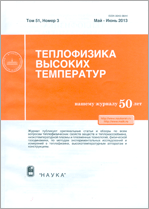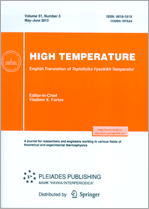|
|
Teplofizika vysokikh temperatur, 2016, Volume 54, Issue 1, paper published in the English version journal
(Mi tvt9269)
|
 |
|
|
This article is cited in 8 scientific papers (total in 8 papers)
Papers published in the English version of the journal
Plasma Investigations
Femtosecond laser assisted hatching: dependence of zona pellucida drilling efficiency and embryo development on laser wavelength and pulse energy
I. V. Il'inaa, Yu. V. Khramovaba, M. A. Filatovb, M. L. Semenovaab, D. S. Sitnikovb
a Joint Institute for High Temperatures, Russian Academy of Sciences, Moscow
b Lomonosov Moscow State University, Faculty of Biology
Abstract:
Ultrashort laser pulses have enabled highly precise and delicate processing of biological specimens. We present the results of using femtosecond laser pulses for dissection of zona pellucida in mouse embryos during assisted hatching procedure. We studied the effects of application of femtosecond laser radiation in the infrared ($1028$ nm) and visible ($514$ nm) wavelength ranges. Laser irradiation parameters were optimized so as not to compromise the viability of the treated embryos. We have demonstrated that application of femtosecond laser pulses with the energies in the range of $250$–$320$ nJ (for the wavelength of $1028$ nm) and $47$–$112$ nJ (for $514$ nm) resulted in efficient zona pellucida dissection. Femtosecond laser-assisted zona pellucida drilling does not slow down the development of pre-implantation embryos and leads to $90$–$95\%$ frequency of complete hatching. The thermal effects can be significantly lower when femtosecond lasers are used as compared to continuous wave or long-pulse lasers. It is crucial when dealing with living cells or organisms. By optimizing femtosecond laser radiation parameters assisted hatching as well as a wide range of embryo-surgical procedures can be efficiently performed, thus creating a great potential of using femtosecond lasers as a multi-purpose “tool of choice” for specialists in the fields of embryology and developmental biology.
Received: 10.06.2015
Citation:
I. V. Il'ina, Yu. V. Khramova, M. A. Filatov, M. L. Semenova, D. S. Sitnikov, “Femtosecond laser assisted hatching: dependence of zona pellucida drilling efficiency and embryo development on laser wavelength and pulse energy”, High Temperature, 54:1 (2016), 46–51
Linking options:
https://www.mathnet.ru/eng/tvt9269
|


| Statistics & downloads: |
| Abstract page: | 218 | | References: | 35 |
|





 Contact us:
Contact us: Terms of Use
Terms of Use
 Registration to the website
Registration to the website Logotypes
Logotypes







 Citation in format
Citation in format 
